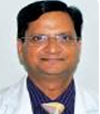What Causes Pain In Hip And Top Part Of Thigh?
I was diag. in Feb. with 2 hern. discs(L2/L3; L4/5, a bulging disc and spondylolisthesis (3/4); Had lumbar traction which had to be discontinued because of hip bursitis and ITB problems; My discs have more or less healed. However when I walk or do VERY modified step areobics, or stat. cycling, I have hip pain with a stabbing pain on top of thigh where it meets torso; could this be caused by my back or bursitis? I also have some shin pain
posted on
Wed, 4 Jun 2014
Medically reviewed by
Ask A Doctor - 24x7 Medical Review Team
 Sun, 24 Apr 2016
Answered on
Sun, 24 Apr 2016
Answered on
 Mon, 25 Apr 2016
Last reviewed on
Mon, 25 Apr 2016
Last reviewed on
hi,
thank you for providing the brief History of you.
A thorough neuromuscular assessment is advised.
As mentioned in history the pain persisting in hip region and also the shin I feel it should be the disc herniation pain as the post healing symptoms are present still. Also, I will advice to stop the aerobics for time being as aerobics is more of the high torque exercises which leads to gavity induced movements in the limbs by applying additional pressure on the muscles to make the spine more mobile in the unstable surface.
Also, you need to focus more in performing mat exercises currently till the muscles become stronger and the spine gets stabilized. Due to instability in the spine there is a chance for the disc to have movements towards the spinal nerve root again. It is advised to strengthen the core, pelvic floor, spine muscles and lower limb strengthening before undergoing any aerobic or sports. As on a safer note taking a note from a physician before the aerobics or sports is advised to avoid further damage to the disc.
in my clinical practice , my patients spend 6-8 weeks of proper physical therapy and post which after the Neuromuscular assessment the futher plan is made. Usually patients recover in 6-8 weeks of time with 99% recovery. Maintenance of physical therapy induced exercises post 6-8 weeks will help to maintain the stability of the spine.
Regards
Jay Indravadan Patel
thank you for providing the brief History of you.
A thorough neuromuscular assessment is advised.
As mentioned in history the pain persisting in hip region and also the shin I feel it should be the disc herniation pain as the post healing symptoms are present still. Also, I will advice to stop the aerobics for time being as aerobics is more of the high torque exercises which leads to gavity induced movements in the limbs by applying additional pressure on the muscles to make the spine more mobile in the unstable surface.
Also, you need to focus more in performing mat exercises currently till the muscles become stronger and the spine gets stabilized. Due to instability in the spine there is a chance for the disc to have movements towards the spinal nerve root again. It is advised to strengthen the core, pelvic floor, spine muscles and lower limb strengthening before undergoing any aerobic or sports. As on a safer note taking a note from a physician before the aerobics or sports is advised to avoid further damage to the disc.
in my clinical practice , my patients spend 6-8 weeks of proper physical therapy and post which after the Neuromuscular assessment the futher plan is made. Usually patients recover in 6-8 weeks of time with 99% recovery. Maintenance of physical therapy induced exercises post 6-8 weeks will help to maintain the stability of the spine.
Regards
Jay Indravadan Patel
I find this answer helpful
Disclaimer: These answers are for your information only and not intended to replace your relationship with your treating physician.
This is a short, free answer.
For a more detailed, immediate answer, try our premium service
[Sample answer]
Related questions you may be interested in
Recent questions on Spinal disc herniation
 Loading Online Doctors....
Loading Online Doctors....


